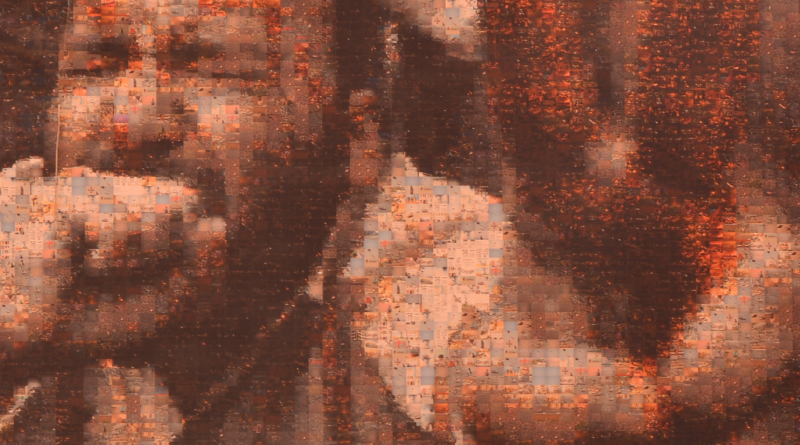From Graffiti to the Podcast: Keeping Egyptian History Alive
By: Leila Abdellatif
@Leilayasser101
AUC’s Tahrir Square campus, which bore witness to the 2011 January 25 uprising and indeed decades of history, was considered a canvas for graffiti during the uprising. Today, about two murals remain on the outer walls of the campus; however, they have been either washed away or do not hold as much political significance. In 2015, most of the graffiti was removed.
Stephen Urgola, Senior University Archivist at AUC’s New Cairo campus and the manager of the “University on the Square: Documenting Egypt’s 21st Century Revolution” project, said that the removal of the graffiti on the walls of the campus was part of a government initiative rather than an internal decision.
Additionally, Urgola said that the removal was also part of a “natural course for the [Tahrir] campus development,” given that most murals were on the walls of the Science building which was torn down later, having become obsolete, and the space it once occupied redesigned as the new entrance of the AUC Tahrir campus.
The Rare Book and Special Collections Library (RBSCL) at AUC holds an online collection of the graffiti that used to be on the walls of the campus. Urgola highlights that the project of documenting evidence of the uprising was not a systematic one, but rather consisted of “various methods,” usually donations of photographs from work-study students or even professional artists such as the Swedish photographer Mia Grondahl.
Urgola said that in an oral history interview conducted by the RBSCL, Grondahl revealed gender-based tensions among the graffiti community whereby male artists would resist efforts made by female artists, “which makes you wonder about the impulses behind the [graffiti] movement itself,” says Urgola.
In spite of the tensions and scatter within the graffiti mi- lieu and the chaos of the revo- lution, the archival project has tried to give a rounded view of the different perspectives. “We still hire students to work on the project,” Urgola said, sounding
a hopeful note that the uprising remains important to document, especially that “it has only been ten years [since it took place]”.
Ammar Abu Bakr, one of the main graffiti artists during the uprising, argued that this art form is always associated with the space and time it is created in.
Abu Bakr, who draws under the artistic name “Dibbanah” (fly), said that the uprising was a watershed moment for graffiti in Egypt.
The artist, who was an Assistant Professor at the Faculty of Fine Arts in Cairo at the time, says that he felt it was “the artists’ responsibility to tell the stories [of the revolution] which were not represented in the media at the time”.
The graffiti genre may have been born in the moment of an explosion of opinion and refusal of oppression, but it was not organic to the artistic scene in Egypt.
“Street art like graffiti is not really a part of the artistic culture in Egypt, unlike abroad, where young people between the
ages of 13 and 14 go out with spray cans and casually tag the walls,” adds the 41-year-old artist.
He further highlighted the distinction between vandalism and mural art which he said are both forms of graffiti. “I’m against vandalism. On the contrary, I believe that artistic murals should be supported like in many countries, even Arab ones like Tunisia, for example,” said Abu Bakr.
In the meantime, the New Cairo AUC campus is home to multiple revolutionary murals on the walls of the Bassily Auditorium created through hundreds of photo collages. The project was supervised by now retired Journalism and Mass Communication (JRMC) Professor David London.
In the middle of October 2021, the murals were temporarily re- moved unbeknownst to the students and professors, causing confusion and disappointment until their reinstallation.
JRMC Professor Kim Fox tweeted in response, “ALL of the #Jan25 photo murals have been removed!”
“I knew about the [murals] project since its inception… when I noticed [the murals] weren’t there I was astonished,” said Fox who has witnessed Egypt in transition since she arrived at AUC in 2009.
In mid-October, AUC posted in its weekly agenda, “The Bassily Auditorium’s revolutionary murals are currently undergoing
maintenance and restoration. They will be reinstalled next week.”
Fox emphasized that the murals are central for documentation but also highlighted their importance because they were a student initiative.
The murals are not the only New Cairo campus reminders of that turbulent period. One of the university gates was renamed after Omar Mohsen, an AUC student who lost his life in the Port Said Massacre of 2012 – a focal point in the aftermath of the uprising.
“AUC [therefore] has an obligation to retain this history [of the revolution],” Fox added.
With the revolution being central to the history of AUC, student opinions become increasingly important in the discourse of how to best document recent history.
Abdalla Nasef, a Political Science student at AUC and the creator of Tahrir Podcast which documents people’s experiences in the Middle East following the Arab Spring, is thankful that – unlike their Tahrir counterparts – the AUC New Cairo murals were not removed.
His leaning toward online platforms is rather clear. “I don’t think that graffiti is a way of documentation… non-physical forms such as podcasts… that is true documentation,” Nasef said.
Fox suggested that podcasting is much more discreet as a form of expression due to “gatekeeping” and its lack of searchability, whereby podcasts are difficult to find unless they have a transcript to search for.
“Podcasts hide behind being an audio platform,” said Fox.
This makes them more advantageous especially as a form of storytelling and “giving a voice
to the voiceless.”
While graffiti in the political sense seems to be taking its final breaths, storytelling remains crucial to voicing the opinions of Egyptians, albeit in more discreet ways.
Fox stated, “I disagree that storytelling is becoming impossible due to censorship – storytelling is huge [and] has a rich Egyptian
history.”
In addition to the RBSCL, much of the graffiti in Tahrir was documented in the 2014 book “Walls of Freedom: Street Art of
the Egyptian Revolution.”
Assistant Professor of Political Science Heba Taha said the book “documents how graffiti changed over the course of the revolution [which is] an important reminder of something that has gone.”
Taha said that the removal of graffiti deprived the Egyptian street of its identity as a resistance space during the uprising.



